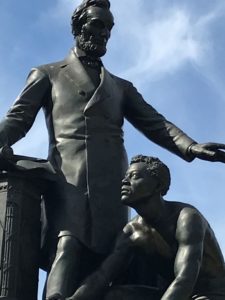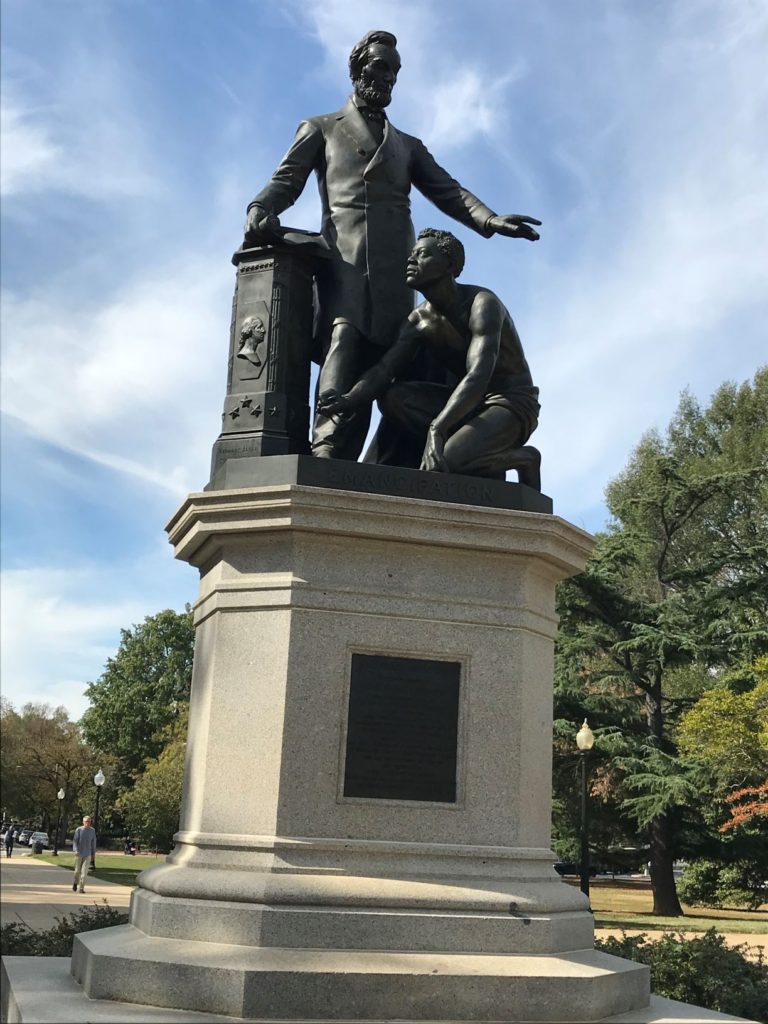June 19th – Juneteenth – represents the end of slavery. But how did that come to be so? And what does the Juneteenth flag mean?

As the graphic above notes, Juneteenth is based on the date June 19, 1865, which is the date that Major General Gordon Granger arrived in Galveston, Texas. As the Civil War was ending, Granger had been assigned to command the District of Texas. Upon arrival, he realized that word of emancipation had not filtered down to Texans, and white Texans continued to enslave African Americans. Granger issued General Order No. 3, which began:
The people of Texas are informed that in accordance with a Proclamation from the Executive of the United States, all slaves are free. This involves an absolute equality of rights and rights of property between former masters and slaves, and the connection therefore existing between them becomes that between employer and hired laborer.
The Proclamation to which he was referring was the Emancipation Proclamation, which Abraham Lincoln had issued on January 1, 1863. The Proclamation declared that all people held in slavery in states in rebellion were “thenceforward and forever free.” As one of the states of the Confederacy, Texas was included in the Proclamation and thus all enslaved people were free. White slaveholders kept that information to themselves and hoped to continue to enslave other Americans. Granger’s General Order No. 3 ended that practice.
Technically, the Emancipation Proclamation was a wartime measure, and its authority was in question at that point in time. However, the 13th Amendment to the Constitution had already been passed by Congress (and signed by Lincoln to show his support even though there is no requirement for the president to sign amendments). Several states had ratified it, but officially the 13th Amendment permanently ending slavery in the United States was fully ratified and went into force on December 6, 1865. This is the official end of slavery.
But African Americans have for many decades celebrated June 19th – Juneteenth – as Freedom Day, a day representative of achieving freedom from slavery. Some states had made it a state holiday. In 2021, President Joe Biden made Juneteenth a federal holiday.
Each portion of the Juneteenth flag carries a specific meaning. The red, white, and blue colors remind us that African Americans were, and are, Americans (most of those enslaved by the Civil War had been born in the United States, some tracing family lines back several generations). The arc represents a new horizon, the opportunities and promise that lay ahead for Black Americans. Think of Martin Luther King’s “The arc of the moral universe is long, but it bends toward justice.” The white star in the center symbolizes both Texas (the Lone Star State) and the freedom of African Americans in all fifty states. The starburst reflects the new beginning offered by freedom. And, of course, the date of General Order No. 3.
Enjoy your federal holiday, but also remember the deep meaning behind the date.

Coming in February 2026: Unable to Escape This Toil
Lincoln: The Fire of Genius: How Abraham Lincoln’s Commitment to Science and Technology Helped Modernize America is available at booksellers nationwide.
Limited signed copies are available via this website. The book also listed on Goodreads, the database where I keep track of my reading. Click on the “Want to Read” button to put it on your reading list. Please leave a review on Goodreads and Amazon if you like the book.
You also follow my author page on Facebook.
David J. Kent is President of the Lincoln Group of DC and the author of Lincoln: The Fire of Genius: How Abraham Lincoln’s Commitment to Science and Technology Helped Modernize America and Lincoln: The Man Who Saved America.
His previous books include Tesla: The Wizard of Electricity andEdison: The Inventor of the Modern World and two specialty e-books: Nikola Tesla: Renewable Energy Ahead of Its Time and Abraham Lincoln and Nikola Tesla: Connected by Fate.



 On June 19th, 1865, Union Major General Gordon Granger entered Galveston, Texas and discovered that somehow word had not previously been communicated to the enslaved people that they were free in accordance with Abraham Lincoln’s Emancipation Proclamation effective January 1, 1863. With Granger’s General Order No. 3, June the 19th came to represent the end of slavery in America, and as such became an African American holiday called Juneteenth.
On June 19th, 1865, Union Major General Gordon Granger entered Galveston, Texas and discovered that somehow word had not previously been communicated to the enslaved people that they were free in accordance with Abraham Lincoln’s Emancipation Proclamation effective January 1, 1863. With Granger’s General Order No. 3, June the 19th came to represent the end of slavery in America, and as such became an African American holiday called Juneteenth.







